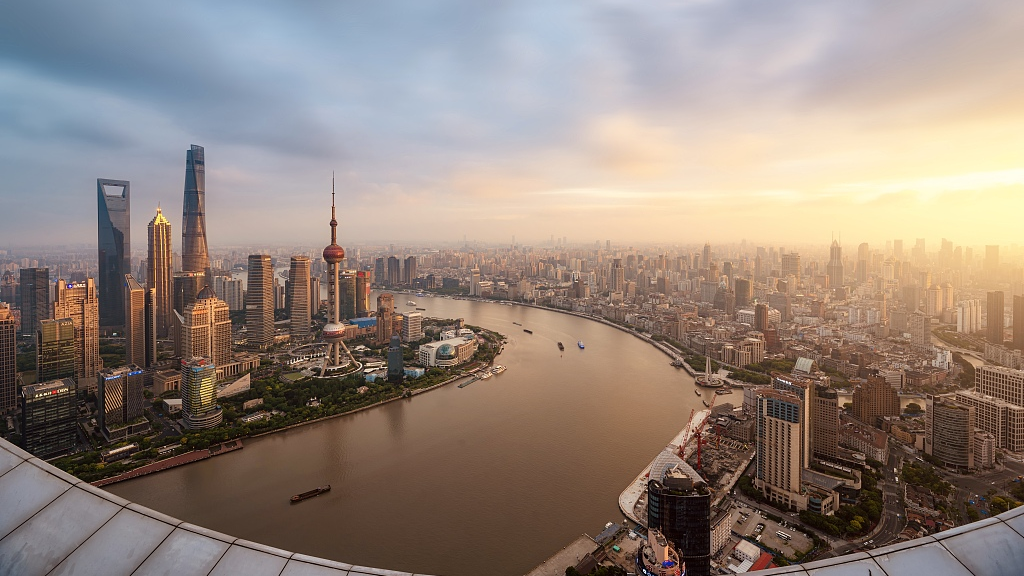
The Huangpu River, Shanghai, China. /CFP
The Huangpu River, Shanghai, China. /CFP
The ongoing four-day sixth plenary session of the 19th Central Committee of the Communist Party of China (CPC) in Beijing is set to deliberate on a draft resolution on the major achievements and historical experience of the CPC's 100 years of endeavors.
Looking back into the long journey under the leadership of the CPC, China has grown to the world's second-largest economy from a poor country, becoming a proactive participant in multilateralism, free trade and many other global affairs.
The CPC achieved its first centenary goal of building a moderately prosperous society in all respects in China after lifting about 100 million people out of extreme poverty between 2012 and 2020.
Here is a quick view of China's economic achievements and what lies ahead as it embarks on the second centenary goal of fully building a modern socialist country by 2049.
Economic takeoff
In 1952, three years after New China's establishment in 1949, the country's GDP was 67.9 billion yuan, or about $30.55 billion converted with the then exchange rate, with its per capita GDP standing at 119 yuan.
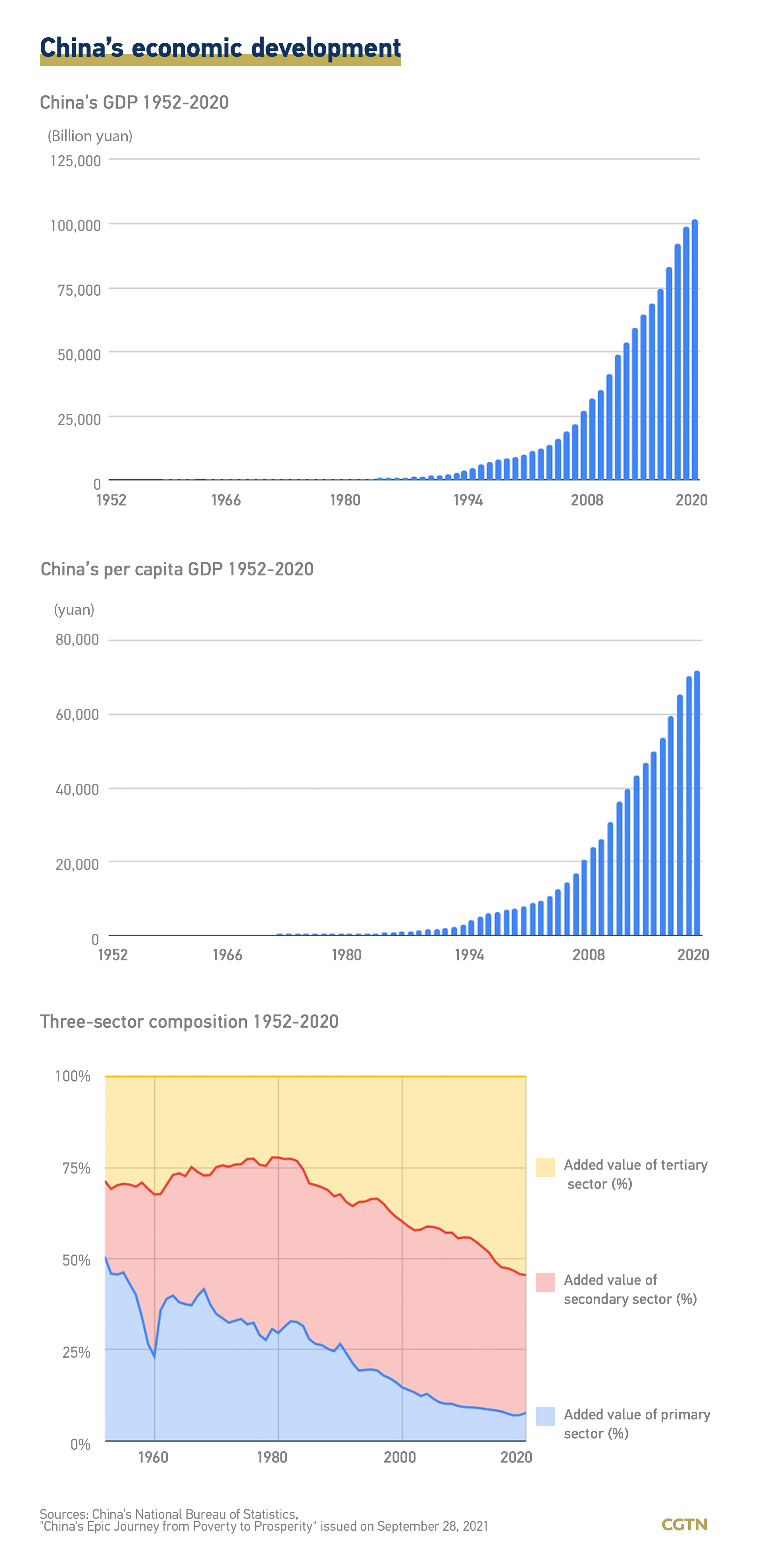
The Chinese economy picked up growth momentum after the central government adopted reform and opening-up in 1978. China's GDP surpassed $1 trillion for the first time in 1998 and overtook Japan as the world's second-largest economy in 2009.
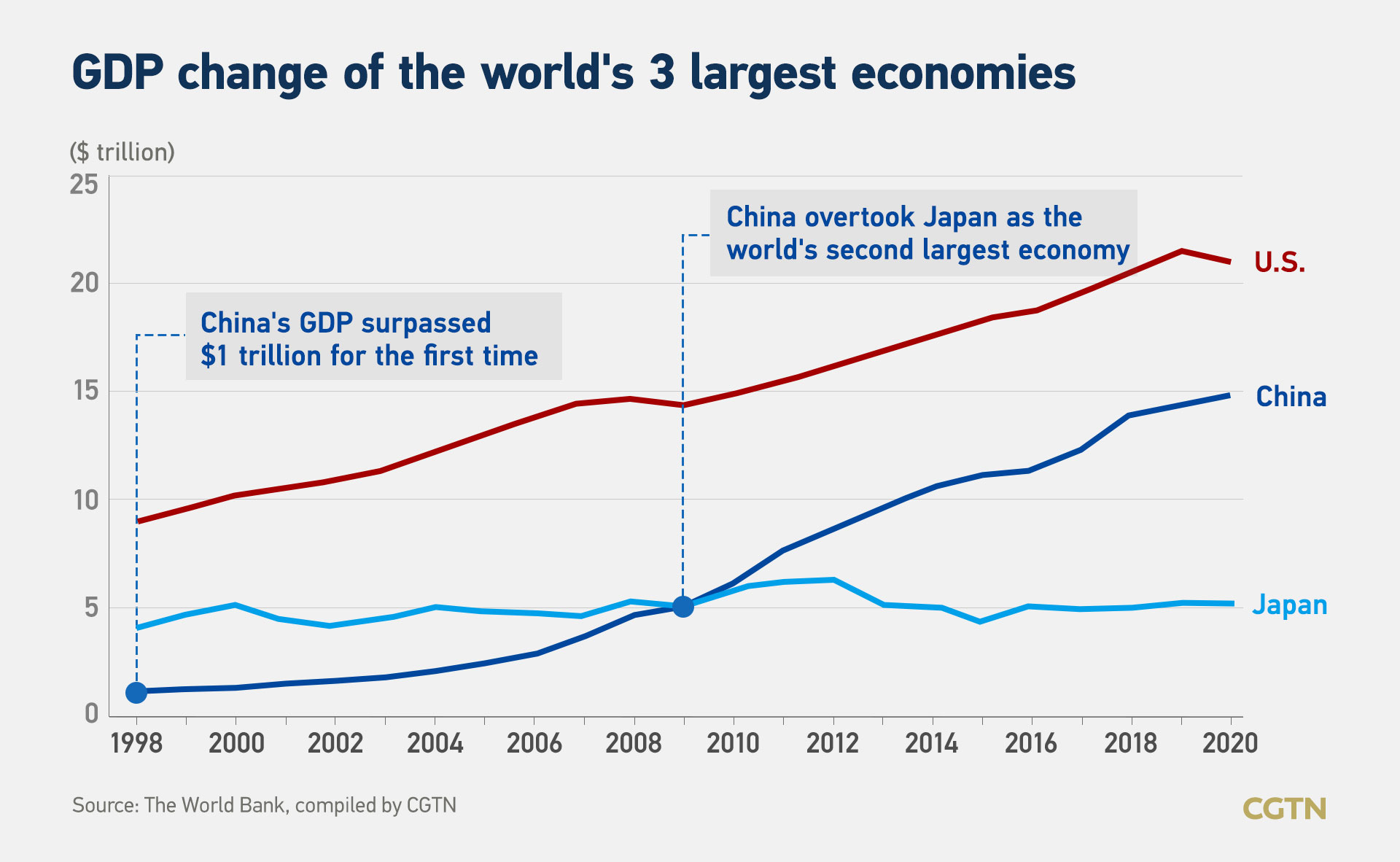
In the fourth quarter of 2020, despite the grave and complex challenges posed by the COVID-19, China managed to bring its economic growth back to a pre-pandemic rate. For the whole year, the country became the only major economy in the world that pocketed positive economic growth. Its full-year GDP exceeded 100 trillion yuan ($15.89 trillion) for the first time.
Chinese President Xi Jinping described the reform and opening-up as "a great reawakening" of the CPC while addressing the meeting celebrating the 40th anniversary of the reform and opening-up in 2018.
Connecting with the world
With the economy taking off, China has been making an effort to better connect with the world. In October, the fifth plenary session of the 19th Central Committee of the CPC announced its intention to take China's open economy to a higher level.
"China's door of opening-up will not be closed and will only be opened even wider," Xi has said on many occasions.
The ongoing 4th China International Import Expo in Shanghai is an emblem of China's high-level opening-up and concrete practice of maintaining multilateralism.
The first of its kind worldwide, the annual global import-themed trade fair has become a major platform for enterprises from developed, developing, or underdeveloped countries to boost their exports to the Chinese market with a population of over 1.4 billion.
To bolster and promote foreign direct investment and free trade in China, the Chinese government opened the first designated Free Trade Zone (FTZ) in Shanghai in 2013, followed by 20 more regions as of 2020. In the FTZ, companies can enjoy numerous preferential policies, such as lower corporate tax and fast and streamlined customs clearance.
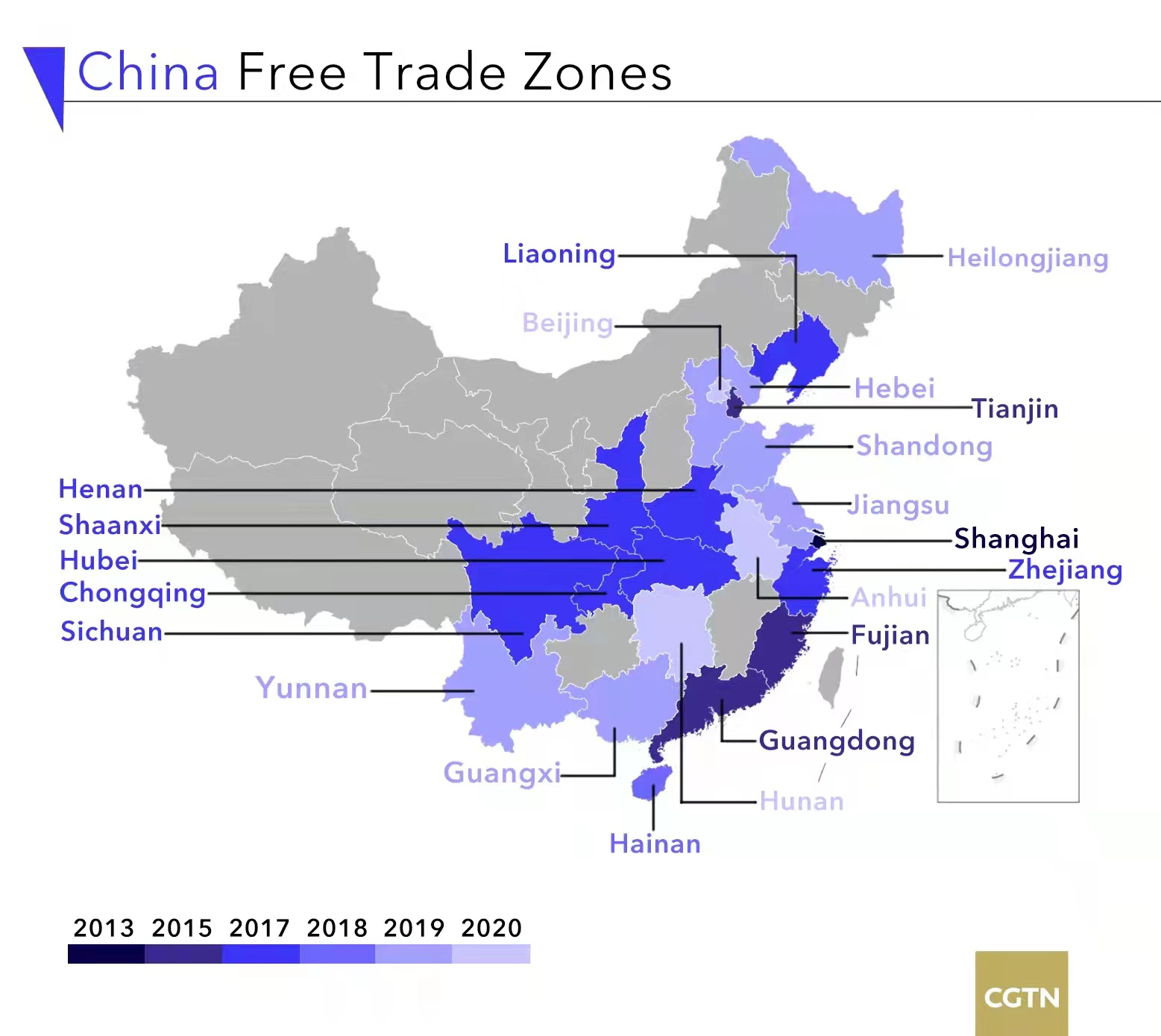
A moderately prosperous society
After decades of endeavor, China completed the goal of building a moderately prosperous society in all respects, Xi announced at the grand gathering to celebrate the 100th anniversary of the founding of the CPC in July this year.
The final 98.99 million impoverished rural residents living under the current poverty line in China were lifted out of poverty between 2012 and 2020. All 832 impoverished counties and 128,000 impoverished villages have been removed from the poverty list.
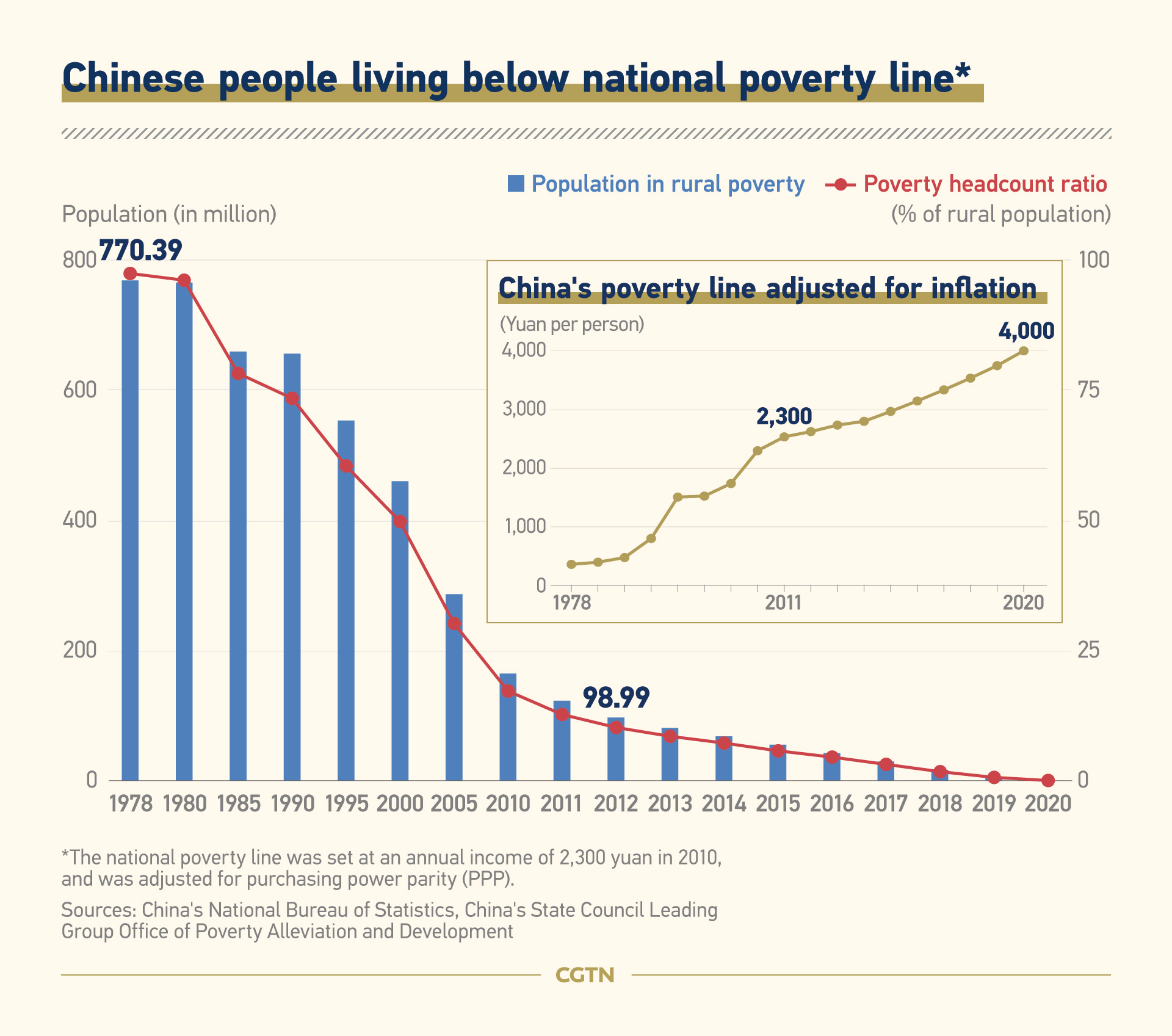
By achieving this, China met the poverty eradication target set in the United Nations 2030 Agenda for Sustainable Development 10 years ahead of schedule.
According to the World Bank's international poverty line, the number of the Chinese people lifted out of poverty over the past 40 years accounts for more than 70 percent of the global total.
In terms of all-around development, China has established the world's largest education system, spanning preschool, primary, secondary and higher education. Medical and health institutions have risen from 170,000 in 1978 to 1,023,000, and life expectancy has increased to 77.3 years.

Common prosperity
For building a modern socialist China, eliminating extreme poverty was necessary, but it was not sufficient. To further improve people's well-being, China has been increasingly focusing on striving for "common prosperity," namely affluence shared by everyone, through a mix of policy moves, such as tax reforms and encouraging philanthropy.
The 10th meeting of the Central Committee on Finance and Economics in late August announced a systematic portfolio of policies, explicitly making common prosperity the top priority of China's second centenary goal.
Common prosperity is an essential requirement of socialism and a key feature of Chinese-style modernization, President Xi said at the meeting.
"A socialist society like China must be a society with a high level of development, meaning that the level of productivity must exceed the highest level," Lu Xia, a research fellow at the National Academy of Development and Strategies, Renmin University of China, wrote in a commentary.
In Lu's view, the key to achieving greater production efficiency is to put innovation at the core of the overall driving force, making science and technology the strategic support for development. "Only by constructing a national innovation system, speeding up self-reliance-oriented innovation and firmly holding key technology in its own hands, can China comprehensively shape the development of new advantages in global competition and win the initiative of development."
China's promotion of common prosperity is bound to be a long-term, arduous and great project and will take a long period of unremitting efforts to achieve that goal, Lu wrote.

